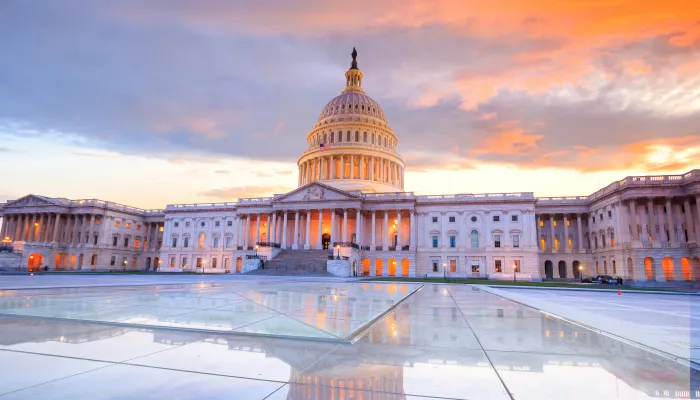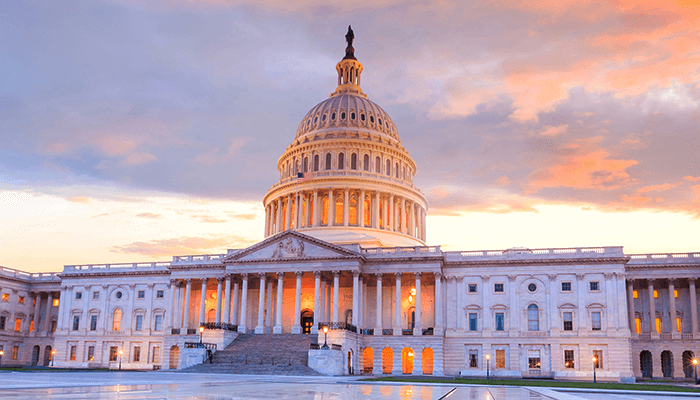Op-Ed: Fiscal Disorder - The Broken Budget Process and the Dire Need for Reform
Ripon Forum | April 21, 2009
This past February, four months after the beginning of the fiscal year, Congress passed the last bill needed to fund the government.
But what it finally passed was more than just late — it was sloppy. Instead of offering separate appropriation bills that could be debated thoughtfully and with undivided attention, Congress lumped them into one, gigantic 225-page “omnibus” bill, and hurriedly passed it on the floor.
Does anyone think this bill got the scrutiny it deserved?
Moreover, at a time of near-universal recognition that our entitlement and tax policies are unsustainable, Congress has made no improvements in these areas for the next fiscal year. Our national conversation on this broken system is long overdue. And if we are serious about changing the situation, then budget reform will have to mean reforming the process by which Congress considers, passes, and evaluates its annual budget.
In theory, the federal budget process is straightforward.
First, the President submits his “budget,” which is actually just a recommendation that reflects the administration's own priorities. After the President’s budget, Congress creates a blueprint for itself called a budget resolution. This resolution is developed through the legislative process, but is not presented to the President and hence doesn’t reflect the consensus of both the Congress and the Executive branches. What it is supposed to do is provide a framework for subsequent spending and tax bills. Congress then considers twelve separate appropriations bills, together with any tax and entitlements bills on its legislative agenda that will become law once they are signed by the President.
Our current budget process is the product of several major reforms -- the last was in the 1970s --but in recent times it has failed us in all the most important places.
The first — and most basic — criticism of the budget process is that it doesn’t produce a simple, realistic framework for how government intends to spend in the short term, plan for entitlements, or impose taxes. The President's budget and Congress' budget resolution are both just preliminary steps in the passage of a budget. They can and often do get kicked aside in the scuffle between the appropriations, authorization, and tax writing committees, all of which create different pieces of legislation that combine to form the big fiscal picture.
Moreover, both the President’s budget and the budget resolution make a variety of unrealistic assumptions that render them largely useless. For instance, the president’s fiscal year 2008 budget accounted for negligible spending on the wars in Iraq and Afghanistan, and made the unlikely prediction that Congress would soon allow expiring tax breaks to place billions of dollars in additional tax burden on the middle class.
Nor does the budget process focus efforts on the biggest drivers of deficits and the debt: long-term entitlement spending. Almost everyone knows that in the coming decades, we will be unable to sustain our entitlement commitments and tax policies, but the budget process doesn’t focus on the level of entitlement growth in existing law or, for changes to existing entitlement law, growth that occurs outside of a narrow window of time. Existing budgetary limits are easily evaded by pushing polices outside this budget window or pretending that they will expire when they likely will not. In the end, most of Congress’ time is spent on the 38 percent of the budget that makes up discretionary spending, with barely any formalized oversight on the mandatory side.
“Almost everyone knows that in the coming decades, we will be unable to sustain our entitlement commitments and tax policies, but the budget process doesn’t focus on the level of entitlement growth…”
Step back for a moment and think about what budgets are supposed to do. We’d all like to spend as much as we want, but budgets show us our limits by bringing all of our obligations and revenue sources into one unified picture. An ideal budget would encourage policymakers to take a look at entitlement spending when they adjusted discretionary spending (and vice-versa), weigh the importance of one tax break against other tax breaks, adjust revenue to compensate for new spending, and generally make real tradeoffs across all categories.
The bottom line is that if something is important enough for the government to do, it is important enough to pay for either by raising taxes or cutting other spending. But our budget process is missing this fundamental connection between the parts. Instead, we foster compromise at the level of individual appropriations bills, where the question is simply how to spend money within a narrowly defined area of appropriations. In practice, lawmakers are actually encouraged to stick with their party when they vote on the budget resolution, but then vote with their Districts or States when it comes to the appropriations bills.
Finally, the “teeth” of our budget process — enforcement — have proved themselves largely ineffective. The original pay-as-you-go rules had the force of law and were enforced by automatic spending cuts. The current rules are not legally binding and easily circumvented, whether through waving budget rules, designating phony emergencies, or pushing costs outside the budgetary window.
There has to be a better way to do things.
An improved budget should meet a few basic criteria. It has to be simple and realistic enough to set credible limits on spending and tax bills. The budget process should provide incentives for lawmakers to engage openly in the inherent trade-offs of real budgeting. And they should work within a framework that takes the country's entire fiscal picture into account: entitlements, discretionary spending, and taxes all have to be on the table. And perhaps most importantly, to ensure that we don't make decisions that endanger our country's fiscal health down the road, the budget should give ample consideration to the long-term ramifications of entitlement and tax policies. Finally, a good budget process has to be backed up with tough enforcement mechanisms: whether through enforceable limits on expenditures, some form of PAYGO, or a new mechanism, lawmakers must be held accountable for their budgetary decisions.
To address this critical issue, the Committee for a Responsible Federal Budget, working with the Peterson and Pew Foundations, has assembled a bipartisan team of experts for a budget reform commission. This effort is modeled after a noted 1967 budget concepts commission that laid the foundation for today’s consolidated budget. As our government spends trillions to pull the country back from recession, the crisis in the economy has spilled over into the budget. And once we begin to repair this budgetary damage, we will be hit by a long-term structural imbalance between spending and revenue that requires even harder choices. The need for serious and thoughtful reform has perhaps never been greater.
--###--
Jim Bates is the Project Director for the Peterson-Pew Commission on Budget Reform at the Committee for a Responsible Federal Budget. He previously served as Chief Counsel, Deputy Staff Director, and Staff Director of the Committee on the Budget for the U.S. House of Representatives.

